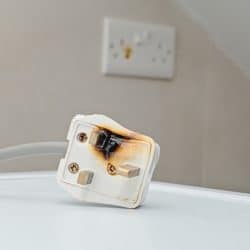
Consumers should be able to trust companies that make and sell products. They should be able to assume that the products they purchase and use are reasonably safe. The bad news is that this is not always the case – sometimes companies knowingly sell defective products. If this happens, and you or a loved one suffers an injury or financial damages a result, then the company at-fault should be responsible for paying for your damages.
These cases are rarely simple but you do have someone on your side: The Law Offices of Larry H. Parker. Read on to learn about the basics of defective products and then contact us at 800-333-0000 for a free legal consultation.
Product Defects Fall into Three Categories
There are three main types of products defects:
- Design defects. As the name suggest, this involves defects in the design of a product. For example, if a ladder was designed in a way that it could not handle more than 100 pounds, that may be a design defect. Note however that design defect does not cover designs that are knowingly, reasonably dangerous. For example, a knife should be sharp so you cannot blame the design if you are cut by a knife you buy.
- Manufacturing defects. This involves a defect during the production process. This requires that a product would have been safe if it had been manufactured in the right way. Using the ladder as an example again, this would involve a ladder that had a rung that was no properly attached during production.
- Marketing defects. Manufacturing defects refer to products that do not have reasonable warning labels and / or instructions to explain who they can be used. Once again, let us consider the ladder. If it was designed to hold 250 pounds but did not have a warning that stated such, a man who weighed 280 pounds who used the ladder and was injured may have a case.
Several Parties May Be Held Liable in Cases of Defective Products
There are a number of parties who can potentially be held liable in a product liability lawsuit. Your personal injury attorney will first determine what type of defect caused the injury. With a design defect, it is likely that the designer or engineer would be at fault. With a manufacturing defects, the manufacturer may be the liable party, and many parties can potentially be held liable if it was a marketing defect.
Important Things to Know About Product Liability Cases
First, know that if you were using a product in a way it was not designed to be used, then you likely do not have a cause for defective products. For example, if you were using a ladder as a makeshift bridge and were injured as a result, you would not have a case. Second, only a personal injury attorney can give you the answers you need about the specific options available to you. Request a free legal consultation by contacting The Law Offices of Larry H. Parker now at 800-333-0000.



